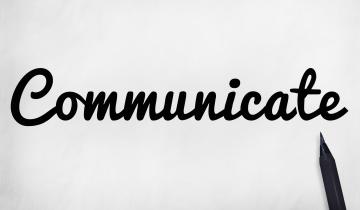Scenario: An employee approaches you with a complaint about a co-worker. The employee is third party to the situation but has knowledge that the colleague directly involved is upset and is growing increasingly uncomfortable.
What is your first step? When HR or managers receive a complaint in the workplace, it may not always warrant an investigation, but it is critical that workplace concerns are taken seriously and addressed in a thorough and timely manner.
Understanding the Concern
The first step is truly understanding the concern. Take a statement from the individual bringing forward the complaint and state that you may need more information as the investigation proceeds.
Select the Investigator
Care should be taken to ensure that the investigator doesn’t have personal connections with anyone involved in the investigation. Depending on the nature of the complaint, it may be best to engage an external investigator or an attorney to lead the investigation. Consider whether a separate notetaker would be beneficial alongside the lead investigator.
Plan, Plan, Plan
Before diving right into talking with witnesses and the accused, take a step back and consider the following:
- Identify the objective and think about which policies may have been violated.
- Evaluate tangent actions that may stem from the complaint. Is it necessary to place anyone on leave pending the investigation, get law enforcement involved, or is there evidence that needs to be preserved or is there potential for workplace violence?
- Determine the chances a complaint will be filed with the EEOC, of litigation, or of the media being alerted and the need for an attorney.
While you may not be able to anticipate every question needing to be asked, advanced preparation can help make the most out of the interview time.
- Draft an introduction with key points for each interview. Include why the person is being asked to participate, encourage confidentiality, review the company’s policy prohibiting retaliation, and what, if any, follow-up the person may expect from this investigation.
- Determine who to interview and in what order. The complainant should be your first interview and you may need to reevaluate the need for future interviews after the initial discussion.
- Much like with investigative journalism, questions typically include the 5 W’s and 2 H’s: Who? What? Why? When? Where? How? How often?
- Keep questions clear and avoid those leading to a yes or no answer.
- Consider the order of questions. Save hard questions for later.
Interviews
There are three phases to effective interviews. Using effective techniques and topics during each can help ensure a successful investigation.
1. Warm-up
- Introduce yourself to the participant.
- Present the planned introduction.
- Start with warm-up questions to help individuals become comfortable sharing information. Discuss their role, how long they have been with the company, and how things are going in their department.
2. Core Interview
- Pause as necessary. Allowing for silence may prompt the sharing of details and gives you an opportunity to consider follow-up questions.
- Paraphrase responses and repeat them back to ensure accuracy.
3. Closing
- End with a catch-all question. Is there anything else you would like to add? What am I forgetting to ask you?
- Ask if there are others that should be interviewed or if there is additional information to be reviewed.
- Consider asking the complainant what the desired outcome or resolution would be.
- Advise that there may need to be follow-up to clarify or obtain further information.
- Restate that the employee should notify you immediately if there is negative or adverse treatment for participating in the process.
After each interview, review key findings, consider any credible concerns, and determine if any changes need to be made to your original interview plan or questions.
Findings, Corrective Action, and Communication
Once the interviews are completed, the evidence has been reviewed, and notes have been collected, reflect on the objective identified after the complaint was originally made. A thorough investigation should result in being able to confidently identify the validity of the claim and determine if a policy was violated. Assess the confidence in findings and severity of the infraction when considering corrective action.
- Evaluate applicable action items that may eliminate the problem, stop or change the behavior, or prevent future incidents.
- Determine the need for remedial training or coaching brought to light during the investigation.
- Consider any past practice or precedent used in similar situations.
Once the investigation is completed and any related disciplinary action or other measures have been taken, follow up with the complainant. Provide a letter stating the investigation has concluded but do not include specific actions taken against the accused or anyone else involved. The employee should sign this letter to acknowledge receipt.
Not all employee complaints require a formal investigation, but having a consistent, documented process to follow makes it easier for managers and HR to respond, reduces potential risk, removes confusion, and shows employees that concerns are taken seriously.
For more information on investigation techniques and best practices, contact Samantha Siebenaller, Human Resource Business Partner, at [email protected] or 262.696.3435.







